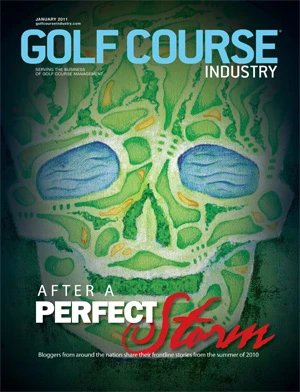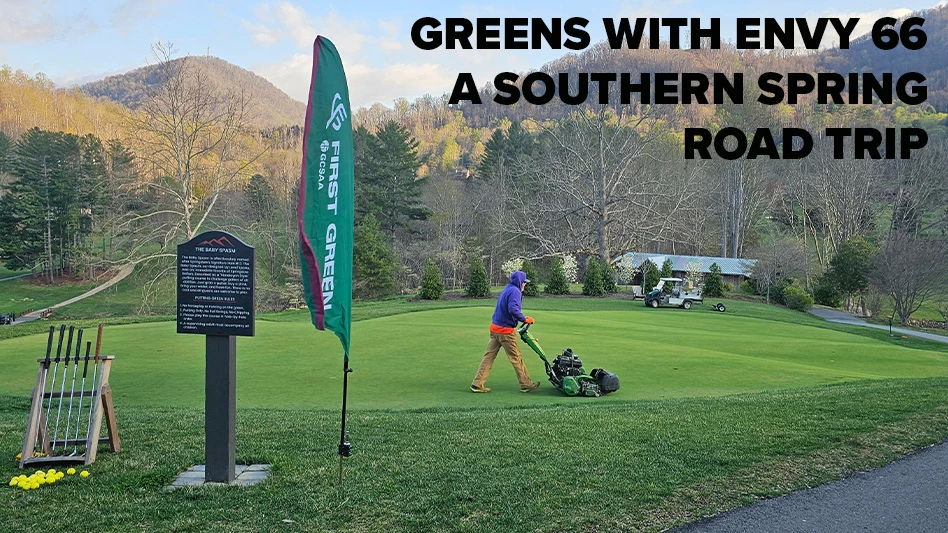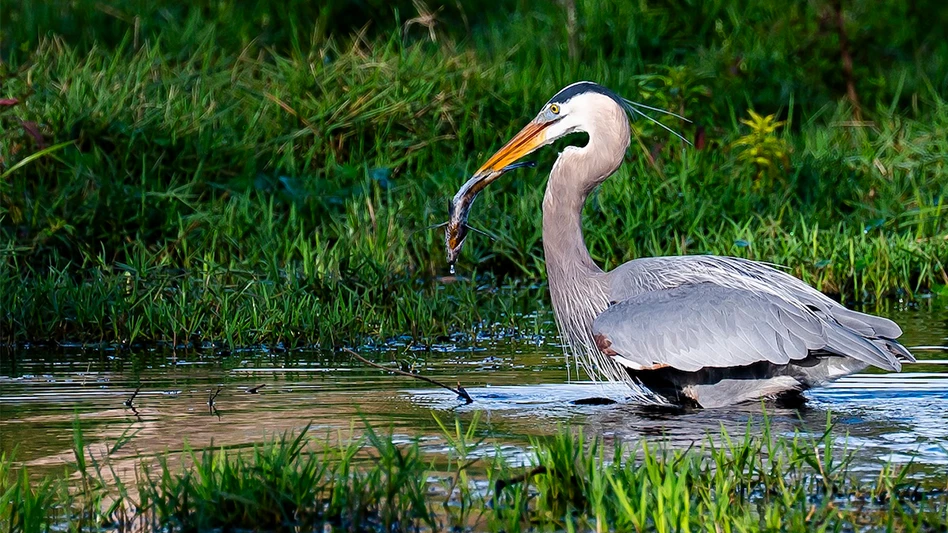There are many options when irrigating a green complex. Historically, there has been a progression from a few sprinklers to many with specific purposes for each. Progressing from the initial center sod cup, greens were irrigated with 4 to 5 full-circle sprinklers spaced evenly around the green. These sprinklers would be operated all at once with a manual or electric block valve or split into two-block sections of left/right or front/back depending on the slope of the green. Rarely did you see individual controls.
The next step was to maintain the full-circle sprinklers around the green and add additional part-circle sprinklers throwing out from the green. Operationally, you would water the green first with the full-circle sprinklers then supplement the surrounds with the out sprinklers.
Next, individual sprinkler control was used for both to provide more control. At around the same time, some courses changed the full-circle to part-circle so there were parts in and parts out. This allowed courses that overseeded greens to water without watering the surrounds.
The next generation of green irrigation was to add approach sprinklers that allowed irrigating of the approach separate from the greens and fairways. Previously, the approach would be watered with a combination of the first green sprinklers and the first set of single, double or triple row fairway sprinklers, which didn’t work well in maintaining approaches, especially when the approach is sloped.
Once the greens and surrounds were covered, you saw improvements and variations on how the sprinklers were placed around the greens. To alleviate the small dry spots caused by the large arc adjustments around the green, some designers went to smaller out sprinklers – 50 or 60 foot throw instead of 70 or 80 – to provide more control around the green. Unless the green is square or round it was very difficult to perfectly irrigate with four or five in/out sprinklers. With the smaller sprinklers, there are many more units, as in most cases a second group is placed 55 or 60 feet away from the green throwing back to give better coverage of the surrounds. These sprinklers were block controlled, but changed to valve-in-head for better control.
In the last 5 to 6 years the addition of small-spray type, block controlled, sprinklers to specifically water the faces of bunkers have also been introduced. Courses first tried spray nozzles, but with their high-precipitation rate and high maintenance, they were not popular. Today, multiple stream, multiple trajectory nozzles are used, which have a much lower precipitation rate with adjustable arcs and throws so the bunker faces can be watered with less maintenance.
Today, it’s not uncommon to see a green complex that has part-circles in, part-circles out, a minimum of two approach sprinklers, a row of sprinklers outside of the green loop throwing back towards the green and individual bunker sprinkler zones. Today’s green system has as many as 30 valve-in-head sprinklers with 15 to 30 separate sprinklers watering the bunkers.
This provides more control of the water around the green complex, and is more expensive than the original four or five full-circle sprinklers. Proper watering of the green complex including surrounds, approaches and bunkers is something players notice first, usually within a few weeks of installation, so it is money well spent.
Recently, there has been some backtracking on how green sprinklers are being installed. Some facilities are going back to the full-circles on the greens and part-circles out from the greens because they believe this provides them with enough control and better coverage than the part-circles in and part-circles out.
There are many ways you can irrigate around the green. The system you install should match your management style and your particular budget.
Use your experience to get the right system for your golf course and do not be shy about telling your irrigation designer or installer what you want. GCI

Explore the January 2011 Issue
Check out more from this issue and find your next story to read.
Latest from Golf Course Industry
- From the publisher’s pen: Technology diffusion and turf
- Applications open for 2025 Syngenta Business Institute
- Smart Greens Episode 1: Welcome to the digital agronomy era
- PBI-Gordon promotes Jeff Marvin
- USGA investing $1 million into Western Pennsylvania public golf
- KemperSports taps new strategy EVP
- Audubon International marks Earth Day in growth mode
- Editor’s notebook: Do your part





